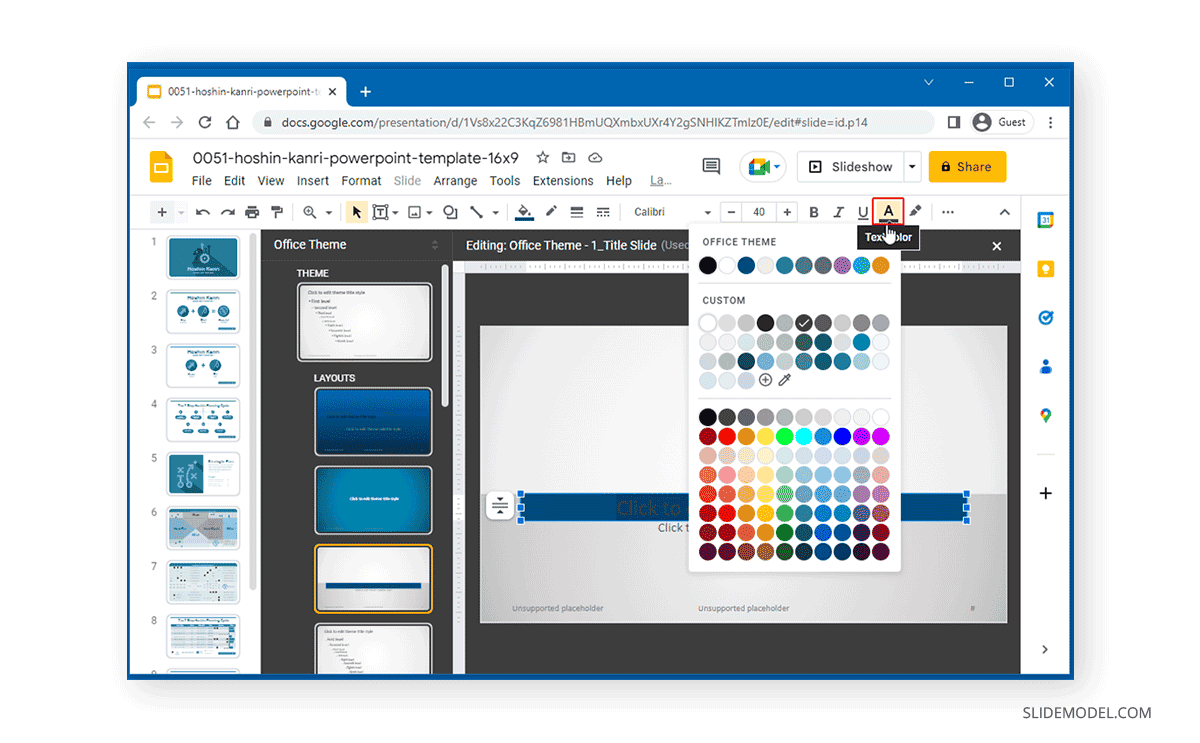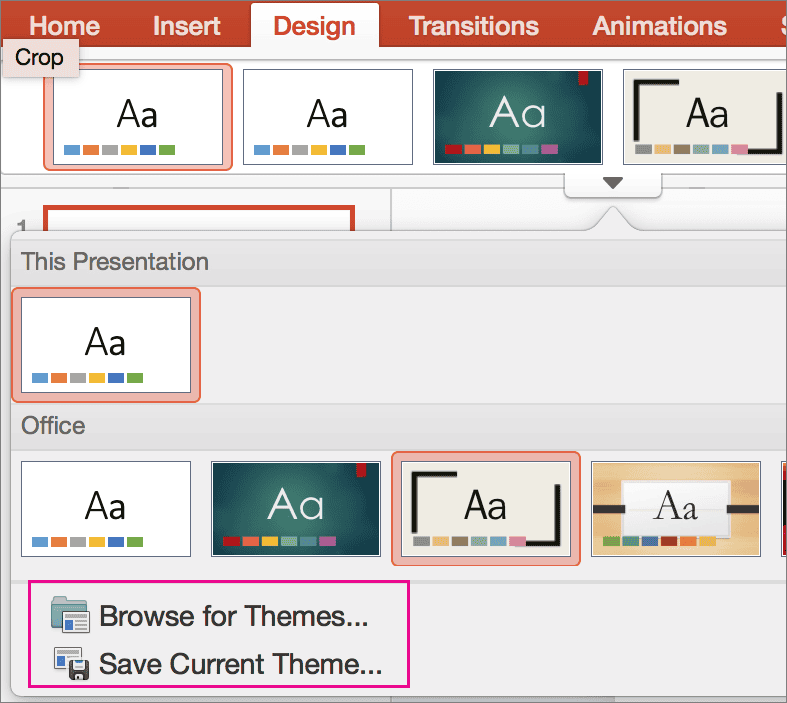Are you eager to elevate your Google Slides or PowerPoint presentations from mundane to memorable? One effective strategy is to tailor your presentations to suit different scenarios, and a key aspect of this customization lies in changing the theme colors of your slideshows.
Why is this important? Well, consider the diverse contexts in which presentations are delivered. From professional boardroom meetings to creative brainstorming sessions, each scenario demands a unique tone and visual style. By adjusting the theme colors of your slides, you can instantly adapt the atmosphere of your presentation to align with the specific objectives and audience preferences of each situation.
Furthermore, consistent background colors and accents throughout your slideshow contribute to a sense of cohesiveness and professionalism. They establish visual continuity, guiding your audience through your content seamlessly and enhancing overall comprehension and retention.

Unique Themes will Generate Unique Impressions
But it doesn’t stop there. Once you’ve selected a theme, the real magic begins. Customizing the theme allows you to inject even more aesthetic power into your presentation. You can fine-tune colors to evoke certain emotions or associations, ensuring that your visual elements complement and reinforce your message effectively.
In essence, by embracing the versatility of theme colors and the importance of customization, you can create presentations that not only capture attention but also resonate deeply with your audience in diverse scenarios, leaving a lasting impression long after the slides have been viewed.
Theming settings aren’t too hard to find in Google Slides or PowerPoint. They’re simple and have easy controls to operate. Through this comprehensive guide, you’ll learn how to use them and create unique and memorable presentations, regardless of your app preference. (Via: DigitalTrends).

How to Change Themes in Google Slides
Selecting a theme in Google Slides is a pivotal step in crafting a visually compelling presentation. By choosing a theme from the outset, you can streamline the design process and maintain visual consistency across your slides. Here’s how to choose a theme in Google Slides:
- Step 1: Open a blank presentation in Google Slides. If the Themes sidebar isn’t already visible, you can access it by selecting a slide and clicking on “Theme” in the toolbar at the top.
- Step 2: In the Themes sidebar, you’ll find a diverse selection of over 20 themes to choose from. These themes range from basic light or dark options to casual and colorful designs, as well as elegant styles.
Take your time to browse through the available themes and select the one that best suits the tone and content of your presentation. Once you’ve made your choice, you’ll notice your slideshow is instantly updated with the new color scheme, fonts, and overall design, providing you with a cohesive foundation to build upon.
- Step 3: Once you’ve selected your desired theme, you can close the Themes sidebar by clicking on the “X” located at the top right corner.
Change Theme Colors in Google Slides
Changing theme colors in Google Slides allows you to further personalize your presentation and tailor it to your preferences. Here’s how to customize the color scheme:
- Step 1: Navigate to the slide you want to customize, then click on the “Slide” tab in the toolbar. From the dropdown menu, choose “Edit theme” to access the theme customization options.
- Step 2: Upon selecting “Edit theme,” the Theme Builder will open, showcasing all slides within the theme along the left side. The master slide will be displayed at the top, providing a comprehensive view of the theme’s layout and design.
Optionally, you can choose to rename the theme by clicking on “Rename” at the top, allowing you to give it a more customized name.
- Step 3: To begin customizing the colors of your theme, select a slide from the Theme Builder. It’s essential to note that any changes made to the colors will be applied uniformly across all slides within that theme.
Changing Colors
Next, navigate to the toolbar at the top and click on “Colors” to access the color customization options.
- Step 4: When the sidebar displays on the right, open the Choose a theme color drop-down box.
- Step 5: Pick one of the theme colors that you want to change. You’ll see options like text and background, accent, and link.
- Step 6: In the Colors menu, you have several options for customizing the color scheme of your theme. You can enter a specific hex code to precisely define a color, utilize the shading tool to adjust the brightness and saturation, move the hue slider to change the overall tone, or simply select a default color option. As you make adjustments, you’ll see the changes reflected immediately on the slides displayed to the left in the Theme Builder. This real-time preview allows you to fine-tune the color scheme until it perfectly complements your presentation’s style and content.
- Step 7: Once you’ve made all the desired color changes, close the color customization sidebar by clicking on the “X” located at the top right corner. Then, close the Theme Builder by clicking on the “X” at the top right corner as well.
With these steps completed, you’ll return to the regular view of your presentation, where you can seamlessly continue editing your slideshow with the newly customized color scheme.

Change Themes in PowerPoint
Similar to Google Slides, Microsoft gives Office users the ability to change themes and visuals in PowerPoint. The themes in PowerPoint allow you to quickly alter the appearance of your presentation slides, giving them a fresh and polished look. Here’s how you can change themes in PowerPoint:
- Open PowerPoint: Launch PowerPoint and open the presentation you want to edit.
- Access the Design Tab: At the top of the PowerPoint window, you’ll see a series of tabs. Click on the “Design” tab to access design-related options.
- Browse Themes: Within the Design tab, you’ll find a selection of pre-designed themes. Scroll through the available options to preview different themes. PowerPoint offers a variety of built-in themes, each with its unique layout, color scheme, and fonts.
- Select a Theme: Once you’ve found a theme you like, simply click on it to apply it to your presentation. PowerPoint will immediately update your slides with the new theme’s design elements.
- Customize the Theme (Optional): After applying a theme, you can further customize it to suit your preferences. For example, you can adjust the color scheme, fonts, and background styles by selecting options within the “Variant” and “Customize” sections of the Design tab.
- Save Your Changes: Once you’re satisfied with the new theme and any customizations you’ve made, remember to save your presentation to preserve the changes.
By following these steps, you can easily change themes in PowerPoint to enhance the visual appeal and professionalism of your presentations. Experiment with different themes to find the one that best complements your content and effectively communicates your message to your audience.
Conclusion
In conclusion, it’s easy to change themes in Google Slides and PowerPoint. The feature offers a powerful way to transform the visual appearance of your presentations, adding professionalism and aesthetic appeal.
In PowerPoint, accessing the Design tab allows users to browse through a variety of pre-designed themes and apply them with a simple click. Furthermore, customization options enable users to fine-tune themes to match their specific preferences and branding needs. Similarly, in Google Slides, selecting a theme from the outset or modifying it later in the editing process empowers users to create visually cohesive presentations that resonate with their audience. The ability to customize colors, fonts, and layouts ensures that each presentation is tailored to the content and context in which it will be delivered.
Choosing the right theme can make all the difference in capturing attention and leaving a lasting impression.





